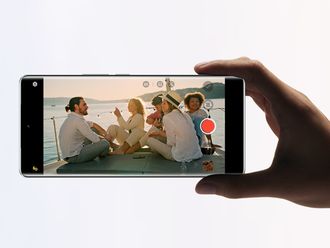One thing the personal-tech industry hasn't really figured out is how to make us healthier. Now Jawbone, best known for its wireless phone headsets, is giving it a try with a new device called UP.
It's a colourful, deceptively simple wristband built around a motion sensor that works with an iPhone app to track your activities, sleep and eating habits. I like its design and ease of use, though I can't help feeling that someday, perhaps only a couple years from now, we'll look back and marvel at how rudimentary it was.
In form, UP calls to mind those ubiquitous LiveStrong bracelets from the Lance Armstrong Foundation, but it's thicker and the two ends don't meet. The wristband, which costs $100 (Dh367), comes in seven colours and three sizes. The big-boned should beware: I found even the largest to be somewhat on the snug side. The company says an extra-large version is coming. To start using UP, I first downloaded the free iPhone app from Apple's App Store. Then I removed the cap covering one of the wristband's tips to expose what looks like a headphone jack. That's because it is: You sync information by plugging UP into the audio port and cranking up the iPhone's volume.
When I tried to set up my account, the app recognised my e-mail address from having used other Jawbone products — but curiously, instead of welcoming me as a long-lost friend, it refused to take me any further until I substituted a different address. Jawbone says it is changing the software to show some love to existing customers.
I then set my daily targets for walking, sleeping and eating. I figured I'd start off easy, so I set my goals for 5,000 steps daily, which Jawbone considers lightly active, seven hours of sleep a night and two "energising" meals. I also told the band to remind me, via a gentle buzz on my wrist, to get up and move around if I remained seated for too long.
UP is designed so you rarely have to remove it. It's water-resistant, in my case surviving a week's worth of showers with no ill effects, and goes up to 10 days before you have to recharge it.
It also stores up to a month's worth of data, though the whole point is to sync it with your iPhone more frequently so you can track your progress against your goals and against challenges issued by your friends.
Mutual support
Those challenges are a big part of the UP story. The idea is that you and your friends can provide mutual encouragement and support for making healthy lifestyle choices. All the more curious, then, that the app isn't yet integrated with Facebook or other social networks.
Even though you wear UP in an ideal position to measure your pulse, it doesn't. What it tracks are your steps, and through the iPhone's GPS, your distance travelled. That means walkers, runners or outdoor cyclists will find it more useful than those who work out in a gym or on a stationary bike.
The food piece of the app is similarly limited. You're supposed to snap a photo with your phone of every meal you eat; then, two hours later, the app asks you how you're feeling. The idea is that you'll eventually associate certain foods with feeling sluggish, or energised. What you want is for the app to be smart enough to recognize what you're eating, and help you make intelligent decisions. It does neither.
Sleep monitoring is more useful. Once you press a button on the wristband's tip, it captures the length of time you're in light and deep sleep. You can even use the app to have the band buzz you at the point within a half-hour window when you're likeliest in your sleep cycle to awaken feeling refreshed. The device UP most closely resembles is the $100 Fitbit, but there are important differences. The Fitbit sensor is designed mostly to be clipped to clothing, where it's been known to take an unplanned and sometimes damaging trip through the washing machine.












